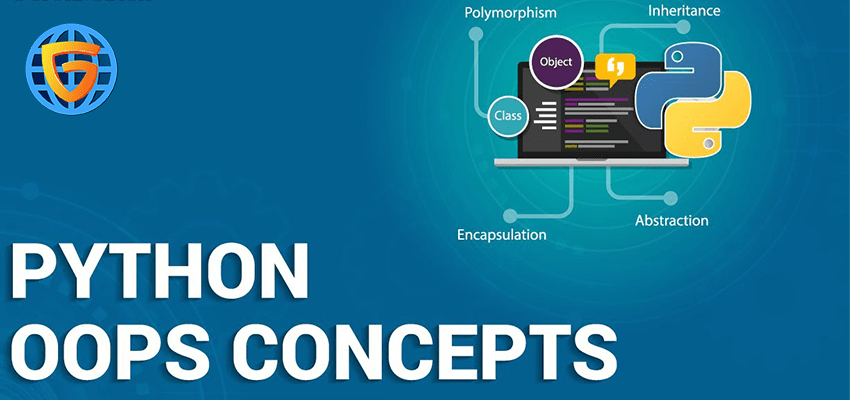In Python, the main concept of object-oriented programming (OOPs) is to hold the data and the functions that work on that together as a single unit so that no other part of the code can access this data. OOPs use objects and classes in programming and aim to implement real-world entities like class, inheritance, polymorphisms, encapsulation, etc.
Major Concepts of Object-Oriented Programming (OOPs) are:
• Class
• Objects
• Polymorphism
• Encapsulation
• Inheritance

Class
A class is a collection or package of objects which contains the blueprints from which the objects are being created. It is a logical entity that contains some methods and attributes. Class is a user-defined data type, which holds its data and its functions, which can be accessed by creating the blueprint of that class.
• Let’s take an instance, let’s say you wanted to track the number of cars that may have different attributes like the brand, color, size. If a list is used, the first element could be the car's brand while the second element could represent its color. Let’s suppose there are 100 different cars, then how would you know which element is supposed to be which? What if you wanted to add other properties to these cars? This requires the exact need for classes.
Some Basics Points on Python class:
• Classes are created, keyword class.
• Attributes are the variables that belong to a definite class.
• Attributes are always public and can be accessed using the dot (.) operator.
Example: Myclass.Myattribute
Class Definition Syntax:
class ClassName:
# Statement-1
.
.
.
# Statement-N
Objects
The object is a logical entity that has a state and behavior associated with it. It could be any real-world object like a mouse, keyboard, chair, desk, pencil, etc. Moreover, functions such as lists, integers, strings, arrays, and dictionaries, are all objects. Specifically, any single integer or string is an object. For instance, the number 1 is an object, and the string “Hello, ocean” is an object.
Objects consist of :
• State: It is represented by the attributes and also reflects the properties of an object.
• Behavior: It is represented by the methods of an object and reflects the response of an object to other objects.
• Identity: It gives a unique name to an object and enables it to interact with other objects.
To understand the state, behavior, and identity let us take the example of the class car.
• The identity can be considered as the brand name of the car.
• State or Attributes can be considered as the brand, color of the car.
• The behavior can be considered as to whether the car is a racing car or sedan.
Syntax For Creating an object
Pythonexp
-
-
-
obj = Car()
Inheritance
The characteristic feature of Inheritance is that it is capable of inheriting properties from another class using its base class. The class that derives properties is called the derived class or base class, and the class from which the properties are being derived is called the base class.
The major benefits of inheritance are:
• It is capable of representing real-world relationships.
• It provides the reusability of a code, preventing us from writing the same code again and again.
• It is transitive, which means that if class B inherits from another class A, then all the subclasses of B would automatically inherit from class A.
Polymorphism
Polymorphism can be understood as the ability of a message or instructions to be displayed in more than one form, just like a person can have different characteristics at the same time. For example, a man at the same time is a grandfather, father, a husband, an employee can possess different behavior in different situations at the same time using polymorphism we can do this using a single function.
Encapsulation
In simple words, we can define encapsulation as the fundamental concept in object-oriented programming (OOP) which describes the idea of wrapping data and the methods that work on data within one unit and bind the data and the functions that manipulate them. Encapsulation also leads to data abstraction or hiding as it has the capability of hiding the data.
For example, the data of the banking sector, its finance, or accounts are hidden from its branches. Hence it helps in preventing the accidental modification of data. Using private variables the accidental change can be prevented although a class is an example of encapsulation as it encapsulates all the data that is member functions, variables, etc.
Enhance your learning in data structures concepts with the Python Course. Join now and strengthen your python foundations with GICSEH Noida and master your python programming skills. Enroll yourself in the Python Course in Noida at GICSEH to learn from industry experts and take your career to the next level.
Join GICSEH today!!